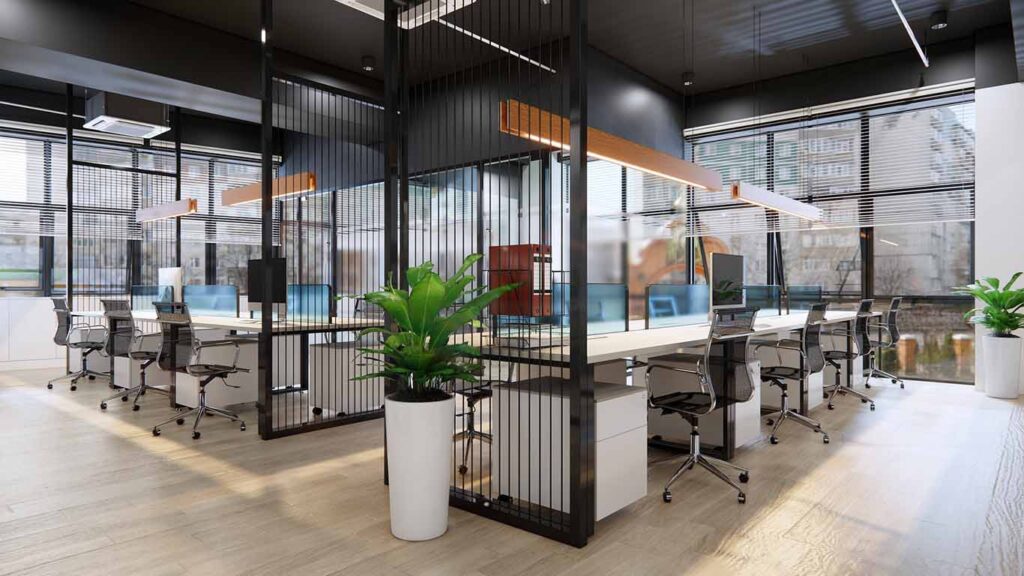Modular construction therefore is a relatively new concept in construction that enables easy and efficient construction of office space. With global players on the lookout for more flexible layout options for working, modular office buildings are a viable option for the future of office architecture.
In this post, several facets of modular office design as well as the benefits will be discussed. As a result, continue reading before you look for building a concession stand.
What Is Modular Construction And How Is It Used For Offices?
In its simplest form, modular construction refers to the actual creation of parts and substructures such as walls and rooms in another location then transported to the site.
A module is produced in a factor using standard parts but they can be modified. In offices, relocatable blocks or containers that are pre-fabricated and can easily be moved around act as modular structures.
These elements can join in order to create forms such as straight lines or L-shaped. This makes the method useful for a fast assembly and also for making changes to the layout.
Benefits Of Modular Offices Over Traditional Construction
So, modular builds are more preferable to traditional methods of construction of brick-and-mortar offices because of flexibility, speed and efficiency. They are manufactured in factories and hence the quality and precision are higher as compared to the locally made ones.
Flexible structures may also be expanded and reconfigured to adapt to the functioning of an organization. They help offices to respond to the changes faster. In addition, since construction takes place off-site, there are minimal interferences with activities on some property.
The construction of modular office projects also leads to less wastage of materials as well. In conclusion, modular construction is more suitable for the needs of the flexible, innovative workplaces of the 21st century.
Most Innovative Modular Office Design Concepts
Modular buildings offer nearly limitless possibilities for creative office designs and layouts. Junctions between modules can give structures geometric shapes and extensions.
Flexibility in the interior design is also provided through open concept, free form layouts are possible through the use of relocatable pods or containers as well. One of the current trends is the so-called ‘infill’ office that uses small non-contiguous plots in urban areas.
To fill the gaps between buildings and to occupy the irregular spaces, modules would be installed. Further, some of the modules contain sustainable aspects such as solar panels, green roofs, and rainwater harvesting systems.
Modular Offices For Simplifying Business Processes
For organizations that require open, interactive working environments, flexible spaces do not come much better than container office buildings. Possible configurations of this modular design enable an organization to expand or contract the physical size of an office space as per its requirements.
They can also be arranged in a way that promotes employee engagement, idea sharing and productivity through designs that include the use of glass walls, moveable walls and multi-functional pods.
First, it is possible to provide more standardized model types for HR and administrative functions while meeting with a client or creative areas may require more unique modules.
Modular Office Solutions In Business Future Prospect
While many organizations switch to the hybrid working model and require flexibility due to fluctuations in the market, modular building solutions are expected to remain popular.
Even the CEO of WeWork has noted that prefabricated spaces are the future of the office environment. In the next decade, more firms globally will shift their focus to modular construction hence the growth in the market.
Enhanced module operation and integrated amenities will extend the range of interest. Out of it, we can expect a higher adoption across industries such as technology, creative industries, and professional services, where fluid workplace environments are appreciated.
Conclusion
In conclusion, this paper demonstrates that modular construction is a flexible and effective solution for creating offices. The method makes construction more efficient and of higher quality, besides allowing for customization and repositioning of workspaces as required.
Due to the shifting towards a more flexible physical environment in line with the frameworks and processes adopted in Agile, there is an opportunity for modular offices. They enable organizations to adapt to change and expand in response to the constantly shifting market environment.


